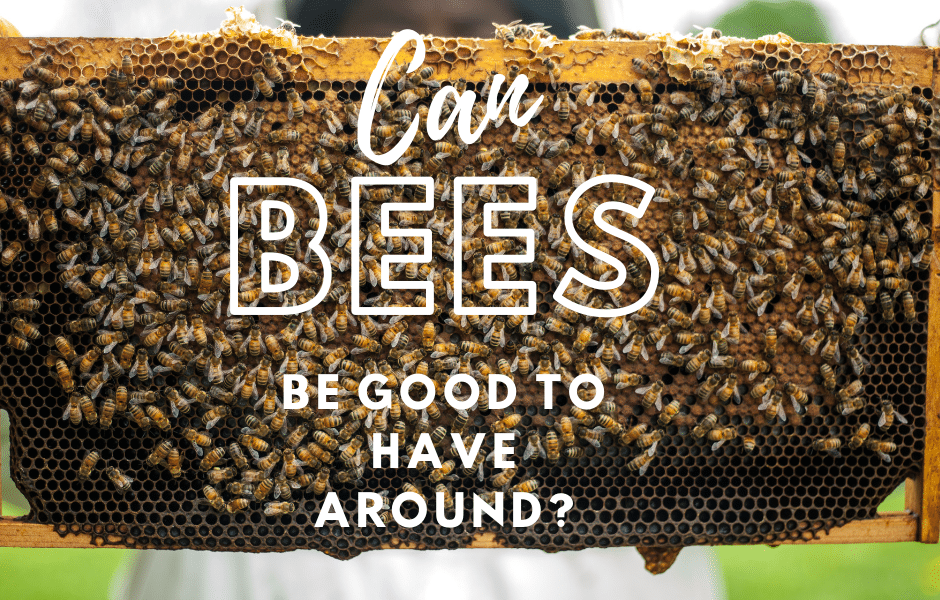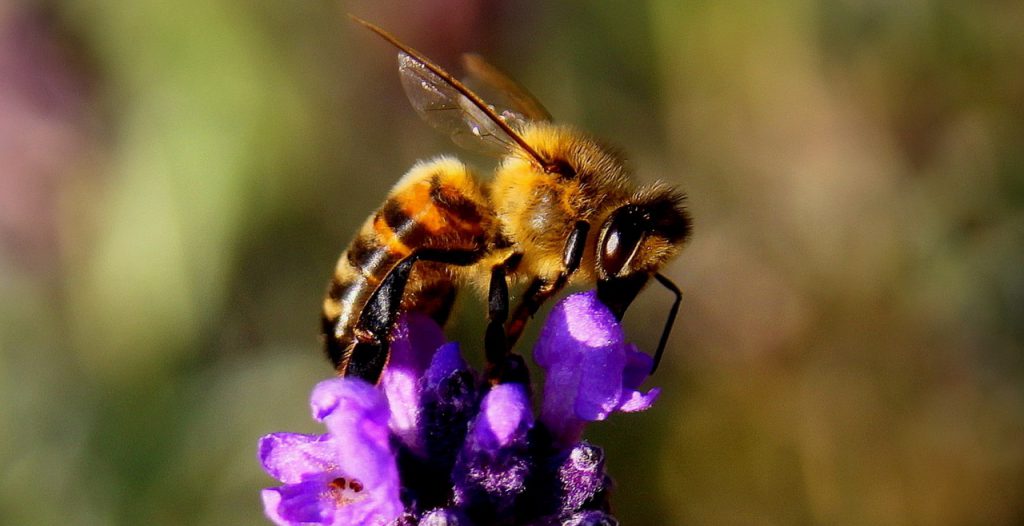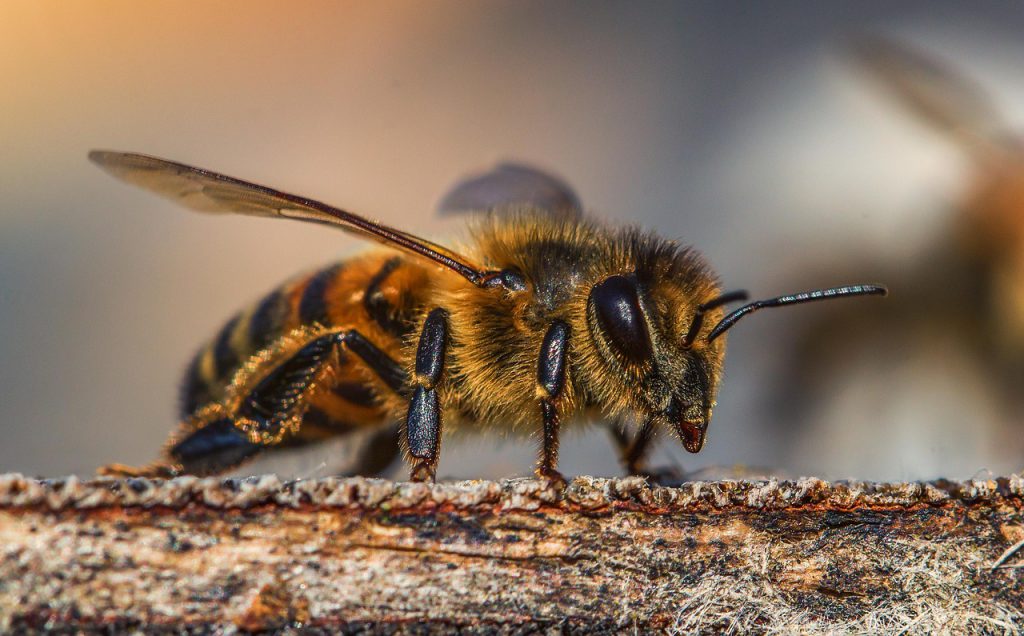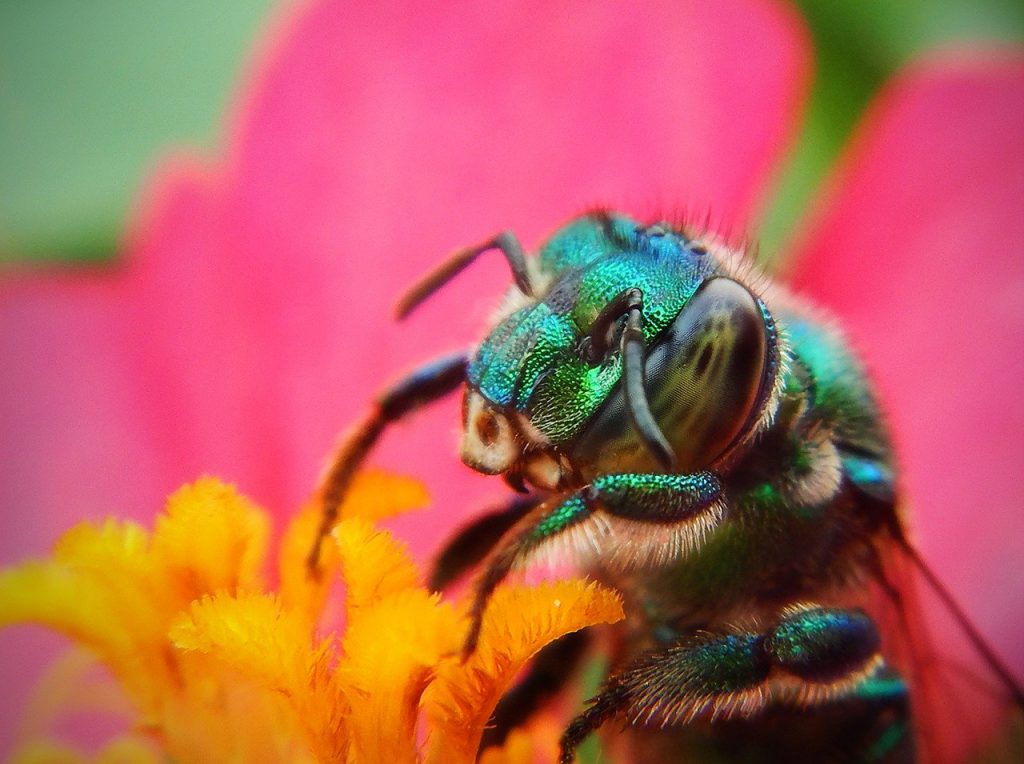
Did you know bees have been a symbol of wealth, good luck, and prosperity since ancient times? Coins and charms with the shape of a honeybee are said to be good luck. You have probably seen all sorts of jewelry with bees, and the symbols are everywhere. Well, it is clear they are a good luck sign but are bees good for the garden?
First, let’s investigate a bit about the fascinating little bees. Then, we’ll learn how bees can be good for the garden and why you need to know all about beautiful buzzing bees.
All About Bees
Busy little bees are just about everywhere. They are usually black, yellow, or both and have four wings. The two wings on each side hook together to form one larger pair when flying, and then they will unhook when they’re not flying. And when communicating, they dance a “waggle dance” to let the others know where the food is located. Watching these incredible insects is quite amusing.
Why Do Bees Follow You?
Pesky as they may seem, bees following you may be your fault. There are four main reasons bees follow or chase humans. Here is how the bees see it…
- Got a new perfume or hairspray? The bees like it too. It reminds them of the scent of flowers.
- Perhaps you have a new blouse? Bees like it too if it is colorful and resembles a flower to them.
- Are you a bit sweaty? Well, sweat smells sweet to some bees.
- Did you look around to see if there is a nest or hive nearby? They may merely be warning you to stay away from their home.
Bees are not aggressive towards humans unless they have good reason to be. If a bee flies around you, rather than swat and run, try standing still. They will realize you are not a flower and move on in most cases.
Why Every Gardener Should Know About Bees
Did you know different bees are good for your garden? What’s more, they are an integral part of the garden’s productivity.
You see, if you are blessed enough to have a home garden, you want the very best for that productive space. You turn the soil and fertilize and care for the seeds and tiny plants until you have a productive garden. Now, the last thing you may want is an insect invasion. But bees are the invasion gardeners want and need.

Bees That are Good for the Garden
Fun Fact: There are over 4,000 North American bee species, according to the USGS. Some are smaller than a grain of rice, while others are the size of kumquats. No matter the size, they all play a part in pollination. Pollinators for our plants, crops, and native vegetation are vital to plant growth and sustainability.
The crops bees pollinate are numerous. They are main crops such as squash, tomatoes, blueberries, cherries, and cranberries. Also, bees care for over 80% of flowering plants worldwide. The honeybees have crops that are dependent on them, such as the lemon and the almond tree.
Do you know which bees are in your garden? Have you ever stopped to observe the flight of the bumblebee or the dance of the honeybee? As important as they are to your garden, you may want to learn more.
Here is a list of the good bees for your garden. We have listed eight, but there are plenty more. Some of these you may know, and others may be new to you.
- The Bumblebee
- Blueberry bees
- Squash bees
- Miner bees
- Alkali bees
- Mason bees
- Honeybees
- and Carpenter bees
The Bumblebee: There are many categories within the bumblebee species, but we are generally talking. The bumblebee is a social insect with a round body covered in hair. Their nests are located on the ground, in holes and rodent burrows and fallen logs. All-day, they gather nectar with their curled proboscis, which extends to collect the nectar. Upon returning to the hive, they feed the pollen collected on their hind legs to their young and deposit excess nectar in the hive.
The bumblebee will pollinate crops such as tomatoes, strawberries, and peppers. They also care for wildflowers and are uniquely useful in the pollination of greenhouse plants. However, as far as honey is concerned, bumblebees do not produce as much as the honeybee does.
Blueberry Bees: These bees look much like the bumblebee. They utilize buzz pollination and pollinate, you guessed it, blueberries as well as flowers. They place their nests in sandy soil in open areas. The female creates a tunnel system and fills the system with pollen, sealing the tunnels off when full and laying her eggs.
Squash bees: A non-social bee, each builds its own nest in the soil. Squash bees are essential pollinators of zucchini and butternut squash, among others. If there are large numbers in an area, they pollinate all available flowers, as well.

Miner Bees: Sometimes called the Chimney bee, these are smaller than the honeybee but stout and furry like a bumblebee. And they don’t sting or bite. They will pollinate almost any flower, including the milkweed, iris, and more. They are thought to be pollinators of other crops such as cranberry, tomato, blackberry, asparagus, persimmon, clover, and raspberry. However, more research is needed to determine all they do.
Alkali Bees: Another ground-nesting bee, these are small with very distinct yellow and black stripes. And between each of the lines is a streak of iridescent scales. One variety is critical for the pollination of alfalfa fields. They like to nest in salty soils, where other bees do not prefer, making them perfectly suited for their native soils.
Mason Bees: Mason bees are appropriately named as they use muds and masonry to build their nests in cracks in the stone and wood holes. They are typically a striking greenish-blue or a blackish with red. Of course, Mason bees are essential to fruit and nut pollination.
Honeybees: The role of the honeybee is much more important than just the production of honey. They are mass pollinators, and hives are often placed on the field for farmers. Honeybees are considered domesticated, but not in the way you think of your family pet. They are simply more docile around humans and can be near crops with little chance of danger to humans.
Carpenter Bees: Another appropriately named bee, this one lives in wood, and they are known to be the largest in the United States. The female bodies are all black, and the males are gold with green eyes. Carpenter bees have large identifiable mandibles for chewing through the wood. They forage many different flowers and crops in a garden, such as an eggplant, tomato, etc.
Really, this list could go on as there are so many bee pollinators in our world, But why do so many people bring attention to the bees? Well, you have probably heard, but let us elaborate.
Why Gardeners Should Know About Bees
The buzzing, dancing and graceful bees are indicators for our environment that something may be going wrong. When the balance of people, plants, natural habitat, and environmental concerns is not right, the bees decline.
So, why should we be concerned about the bee population numbers?
- The more bees we have, the more beautiful the landscape of our fields and gardens will be. Flowers and bees need one another to thrive.
- Bees pollinate fruits, veggies, and nuts and allow them to grow.
- Growing plants provide food for other creatures, including humankind.
- It is our job as the caretakers of the earth to establish the balance of life on our planet.
All of this to say, an essential part of bee conservation is the cultivation of plants that the bees love.
Planting Gardens for the Bees
If you want to help the planet, help the bees, and have a successful garden, you can add the following plants to your yard or home garden. The following plants will create the ideal habitat with nectar and pollen for all. There are apple, pear, and other fruit trees that are an excellent start. Then you can plant flowers like zinnia, marigold, lavender, and sunflowers for a beautiful garden full of bees. What’s more, if you research your growing zone, you can find which will do best for the region you are in and the bees in your location.

World Class Wildlife Removal Knows Bees are Good for the Garden
So, now you understand the significance of bees on the planet, crops and flowers, and the critters and people. But we understand. If bees take up residence in your yard or home, you may want them gone.
When they are not where they are not welcome to be, they can be quite destructive for all the good they do. Building a nest, there can be 10,00 to 60,000 bees in a colony and around your home.
Since bees are under protection and so valuable, the proper removal and relocation of these hives are imperative. A professional wildlife removal company should be notified of the hive and called to come out and safely remove it. They have the tools and gear to get the hive relocated with as little damage to the multitude as possible and without injury to humans.
Should you need honeybee or any bee’s hive removed, call on the team’s experience. At World Class Wildlife Removal, we take care of the bees for you, your family, and the planet.
You can count on the professional and friendly team at World Class to remove the bees and other pests safely and humanely from your property and relocate them ethically.
Contact World Class Wildlife Removal for bee removal today.
